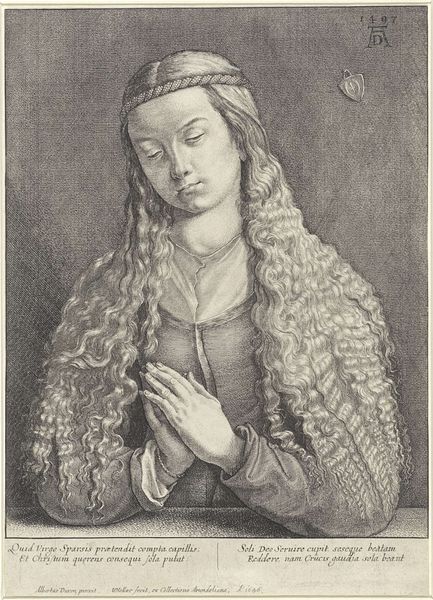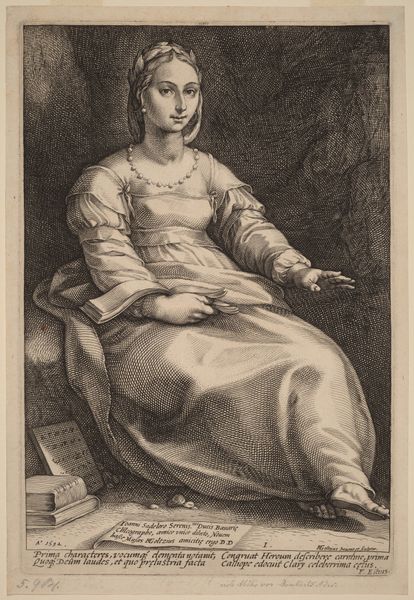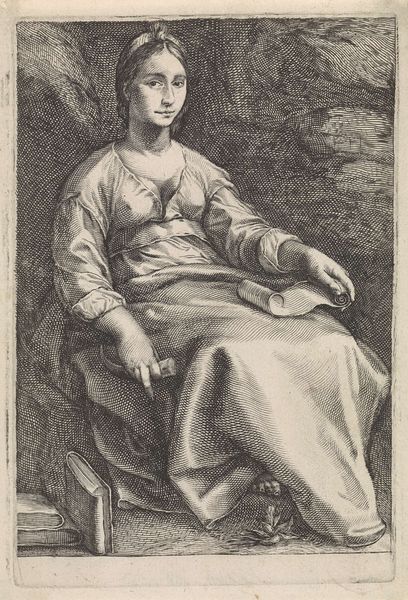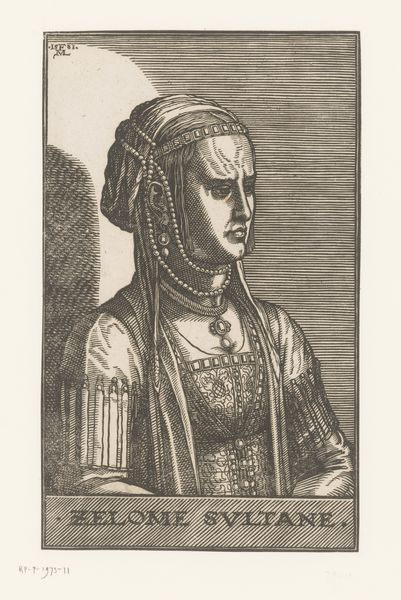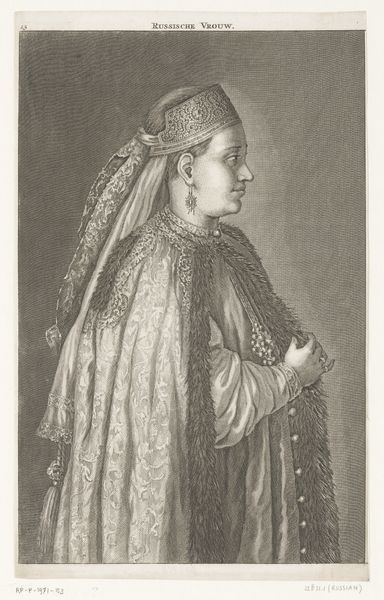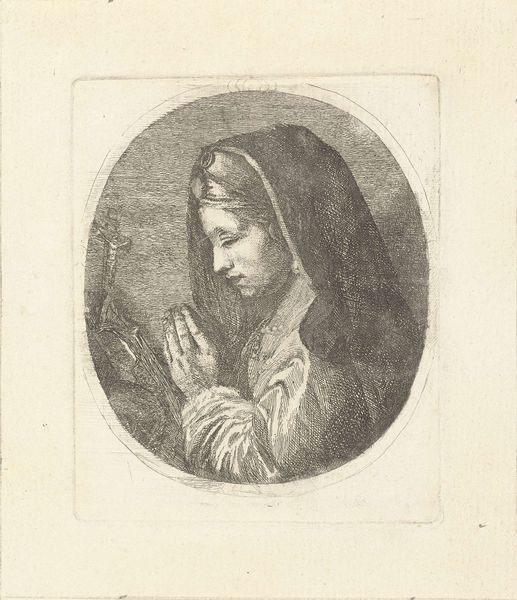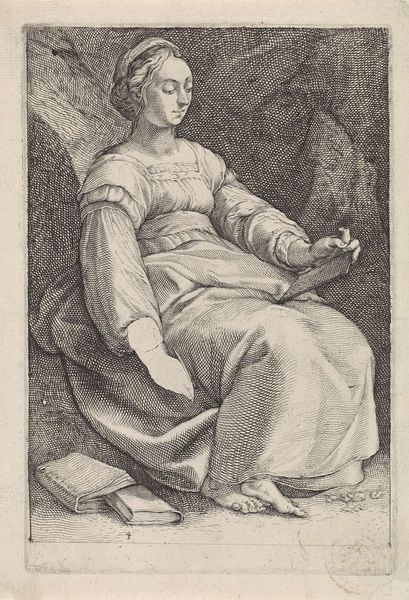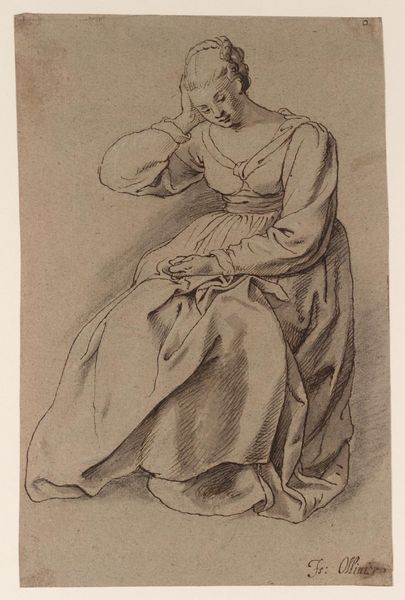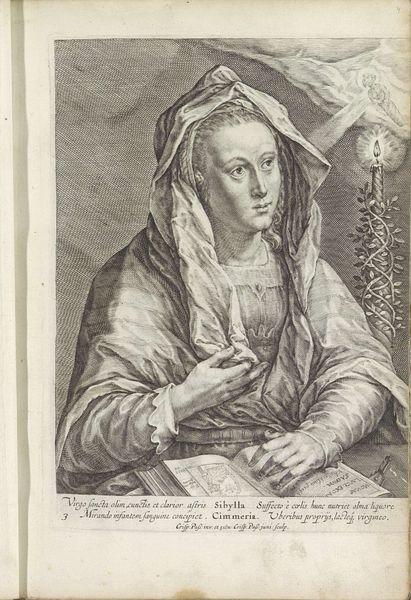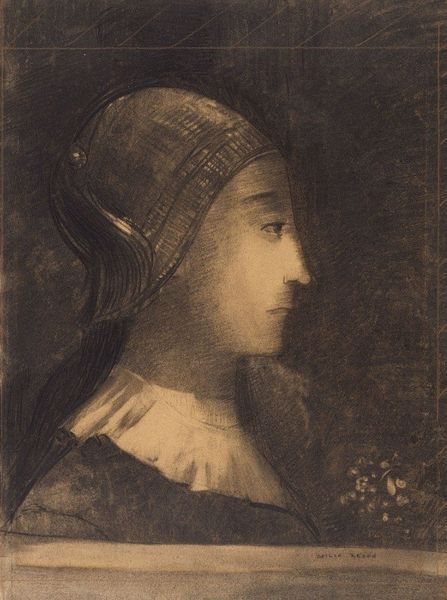
drawing, pencil
#
portrait
#
pencil drawn
#
drawing
#
toned paper
#
facial expression drawing
#
light pencil work
#
pencil sketch
#
charcoal drawing
#
figuration
#
portrait reference
#
pencil drawing
#
romanticism
#
pencil
#
portrait drawing
#
pencil work
#
history-painting
Dimensions: height 273 mm, width 213 mm
Copyright: Rijks Museum: Open Domain
Curator: I am struck immediately by the subject's gaze – intensely sorrowful and internalized, with an elegant linear quality created by the artist. Editor: Here we have "Wenende Maria Magdalena," or "Weeping Mary Magdalene," a pencil drawing by Woutherus Mol. While the work is undated, Mol lived from 1795 to 1857. It’s rendered on toned paper. Curator: The toned paper allows the artist to build luminosity with just light pencil work. The varying pressure creates highlights on her face and intricate head covering, drawing focus. Is it a study for a larger work, perhaps a history painting given its title and dramatic sensibility? Editor: It very well could be a preparatory study. The figure of Mary Magdalene gained prominence not only in religious narratives, but also as a popular subject for exploration of emotion. We see here a glimpse into artistic workshops of the 19th century and its artistic culture— a focus on process and making. What does the materiality, the humble pencil on paper, communicate in contrast to the ornate details of the clothing and expression? Curator: Precisely that contrast generates the tension. The fragility of the medium amplifies the rawness of her emotional state. Notice how Mol uses shading to sculpt her form, emphasizing the curve of her shoulder and the delicate folds of her dress. It is as much about the illusion of depth as it is about her inner life. Editor: I find it particularly compelling when considering the socio-economic landscape of art production at that time. Who had access to materials like toned paper? How was labor organized for artists like Mol? These practicalities are deeply intertwined with what we see aesthetically. Curator: Indeed. The drawing allows us to contemplate beyond pure aesthetics—consider what emotional resonance it could've triggered among contemporary audiences. Magdalene represents penitence, but also female agency within the religious and artistic context. Editor: It speaks volumes—pun intended! I am walking away with a better idea of how the art world transformed from a patronage economy to a commercially focused structure with the help of artistic material development.
Comments
No comments
Be the first to comment and join the conversation on the ultimate creative platform.
